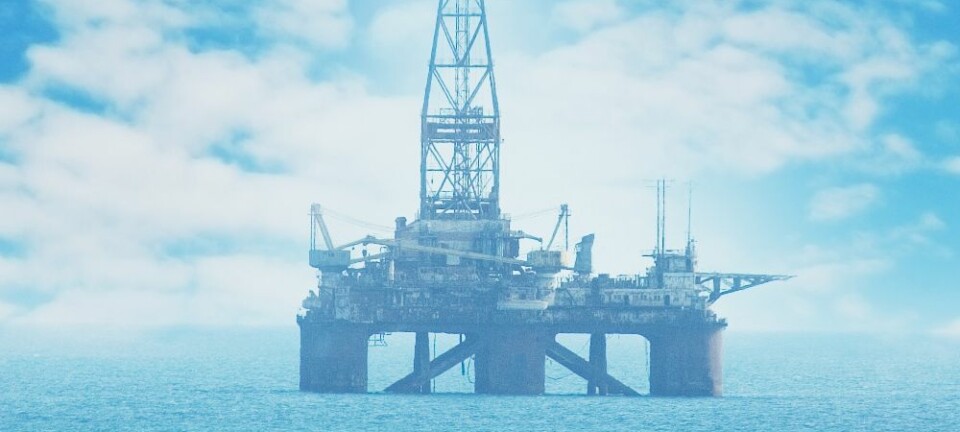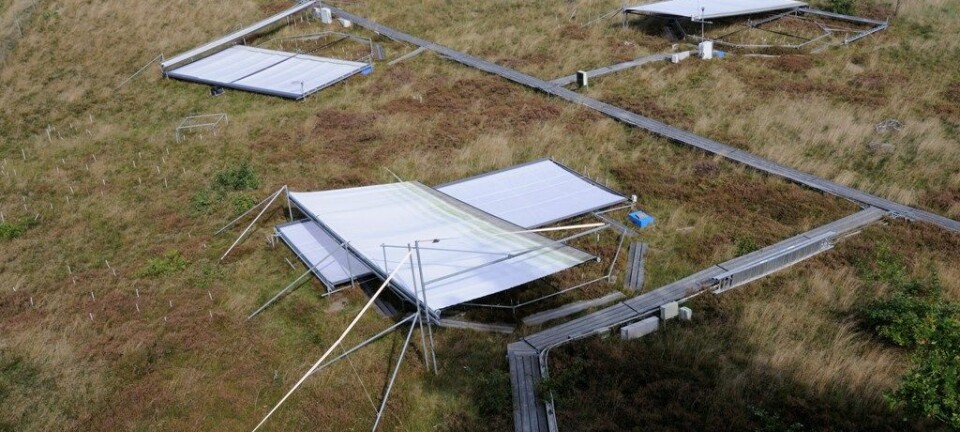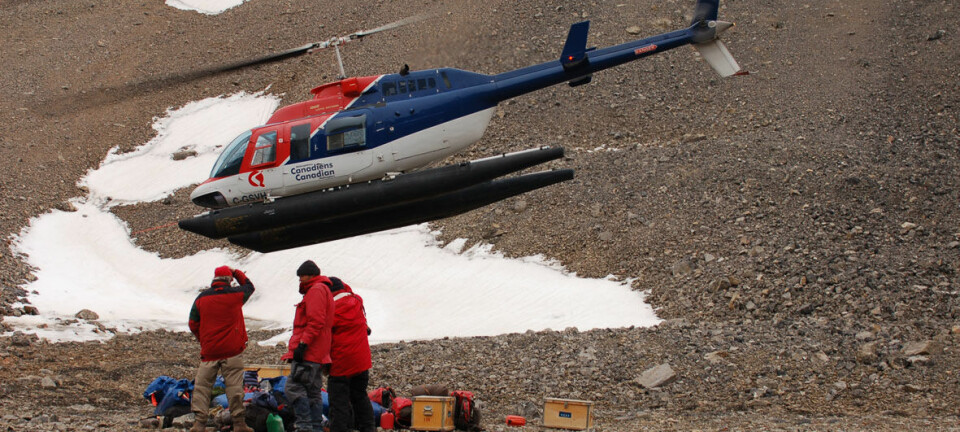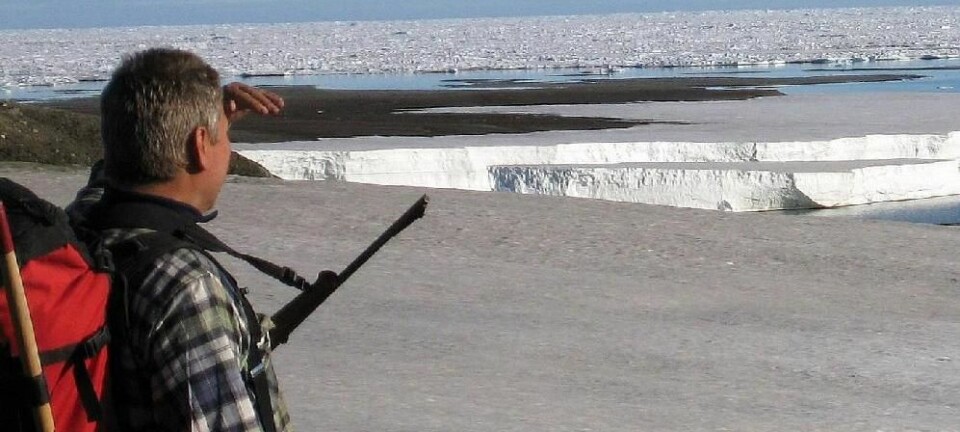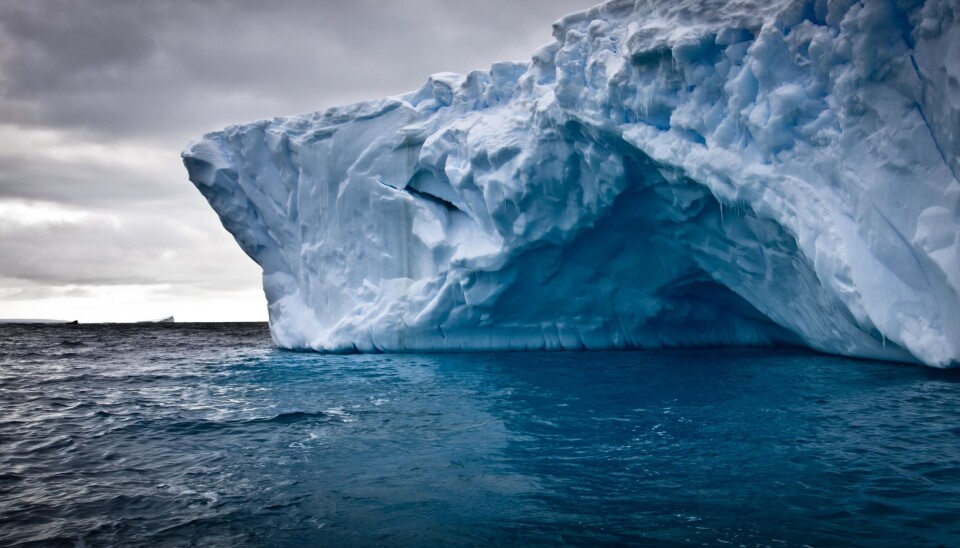
Warm sea currents caused the melting of Greenland’s ice
It was the sea temperature, rather than the air temperature, that determined how fast Greenland’s ice cap melted at the end of the last ice age. This discovery is important for today's research into ice melt
There was a significant concurrence of high marine temperatures and periods when the Greenlandic ice cap melted at a high rate during the last ice age, a climate history study shows.
The inland ice cap during the period when ice-sheets were at their maximum was about one third greater than today and extended beyond Greenland’s current coastline. In addition, the ice cap was then probably surrounded by a floating ice front, as can be seen today around the Antarctic.
Three-stage ice melt
Towards the end of the last ice age, the ice moved back from the southern edge of Greenland’s continental shelf in three stages, starting some 17,000 years ago and ending 9-10,000 years ago.
This is the conclusion of researchers who have conducted mineralogical and geochemical analyses of a sediment core from the seabed off Greenland’s coast. The sediment core has been dated using the so-called carbon-14 method.
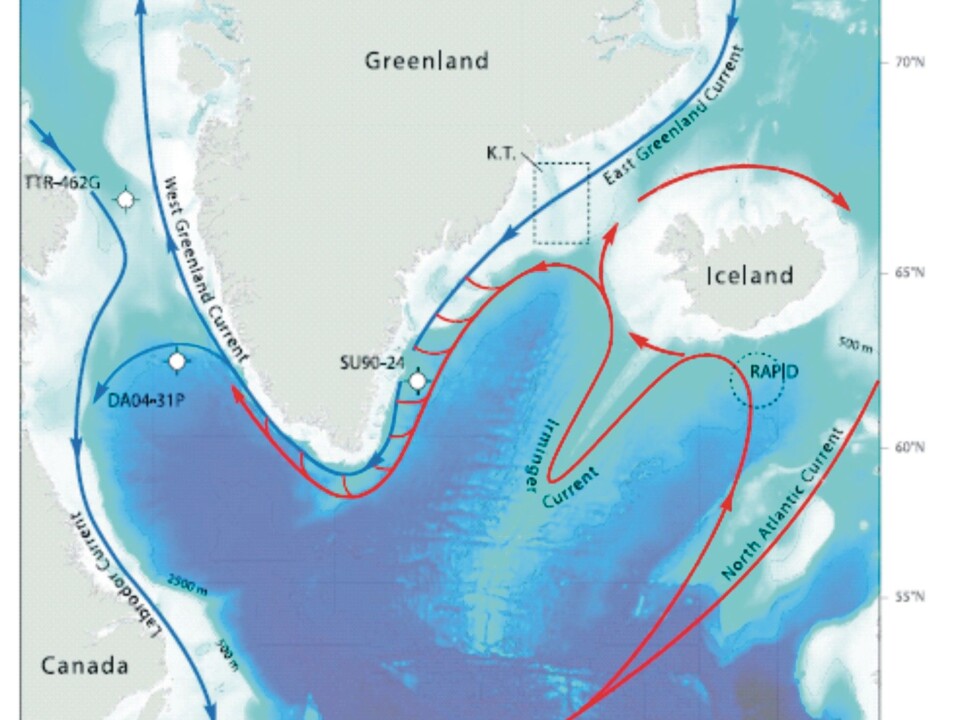
The study, published in the journal Paleoceanography, was conducted by an international team of researchers headed by senior researcher Paul Knutz of the Geological Survey of Denmark and Greenland (GEUS).
”Our study included analyses of the marine temperature in the upper water strata, and they indicate that the temperature during the period of deglaciation was relatively high,” says Knutz.
”We can see that the high temperatures start immediately before and continued during periods when a lot of icebergs broke off from glaciers and when a lot of melt water was produced,” he adds. “Therefore we interpret the temperature anomalies as something that resulted in increased melting and a retreat of the ice cap.”
The ice melt culminated in the so-called Allerød warm period 12,600-13,000 years ago, when large quantities of melt water and many icebergs were discharged from Greenland to the western part of the North Atlantic.
The Irminger Current brought more warmth
We believe that the Irminger Current had greater influence during certain periods when deglaciation occurred, and that an intensification of the Irminger Current was a factor that triggered the destabilisation of the outer edges of the Greenlandic icecap.
The mechanism is related to the Irminger Current, a part of the Gulf Stream that flows to the northwest. The Gulf Stream itself transports warmth from the south to Greenland’s coasts.
”When the Irminger Current gets stronger, it transports more warmth to Greenland’s coastal waters and deep fjords. We believe that the Irminger Current had greater influence during certain periods when deglaciation occurred, and that an intensification of the Irminger Current was a factor that triggered the destabilisation of the outer edges of the Greenlandic icecap.”
Why the Irminger Current suddenly started to transport warmth with greater force is a puzzle, but Knutz has a hypothesis at hand.
”One of the mechanisms we see as being responsible is a very large amount of melt water that came from northwest Europe during the same period – from the Scandinavian and British ice caps,” he says. “Since fresh water is lighter than salt water, a low-saline layer of water at the surface can be formed and driven across the North Atlantic. This layer isolated the warm Irminger Current from the turbulent conditions at the surface, so that the underlying Irminger Current could penetrate further north and northwest.”
The period of maximum ice melt was followed by the Younger Dryas period, when there were pronounced cold climatic conditions that lasted over 1,000 years, and which temporarily stopped the deglaciation.
”The time coincidence is interesting and indicates that the Greenlandic melt water was a possible mechanism for the cooling of the Younger Dryas period.”
Shows why Greenland is melting faster today
The increased melting of the Greenland icecap resulted in a dilution of the Irminger Current, but what was even more important was its effect on the formation of deep water masses in the Labrador Sea, he explains.
”The descent of water masses in the central Labrador Sea is a process that exists today and is regarded as an important part of the global thermohaline circulation.
”Earlier studies appointed to a connection between increased inflow of melt water and a reduction in the formation of deep-flowing water as an explanation of the cold periods in the northern hemisphere – and here the Younger Dryas is a typical example.
He adds: “Our results show that changes in the oceanographic conditions had a great deal of influence on the stability of the Greenlandic ice cap during the last ice age. This conclusion is particularly relevant to climate studies today and for the question of what causes Greenland’s glaciers to melt so quickly, as we’re seeing at Jakobshavn Icefjord today.”
GEUS is working on establishing several projects that use analyses of sediment cores to explain the connection between climate, ocean currents and glaciers in the Arctic area.
Read the article in Danish at videnskab.dk
Translated by: Michael de Laine
